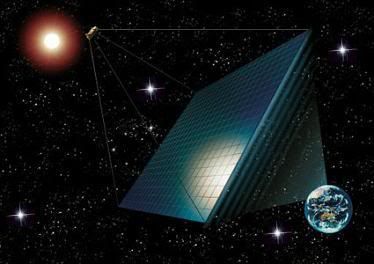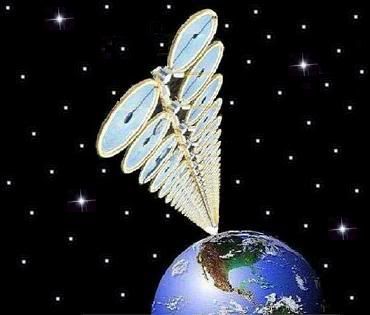Post by glactus on Jul 25, 2011 1:44:19 GMT

Concept one
Space-based solar power is the concept of collecting solar power in space for use on Earth. It has been in research since the early 1970s. The concept differs from current solar collection methods in that the means used to collect energy would reside on an orbiting satellite instead of on Earth's surface. Some projected benefits of such a system are:

Concept two
Higher collection rate: In space, transmission of solar energy is unaffected by the filtering effects of atmospheric gasses. Consequently, collection in orbit is approximately 144% of the maximum attainable on Earth's surface.

Concept three
Longer collection period: Orbiting satellites can be exposed to a consistently high degree of solar radiation, generally for 24 hours per day, whereas surface panels can collect for 12 hours per day at most. Elimination of weather, corrosion, and erosion concerns, since the collecting satellite would reside well outside of any atmospheric gasses, cloud cover, wind, and other weather events.such as elimination of plant and wildlife interference.
Redirectable power transmission: A collecting satellite could possibly direct power on demand to different surface locations based on geographical baseload or peak load power needs. The concept also introduces several new hurdles, primarily the problem of transmitting energy from orbit to Earth's surface for use. Since wires extending from Earth's surface to an orbiting satellite are neither practical nor feasible with current technology, the designs generally include the use of some manner of wireless power transmission.
The collecting satellite would convert solar energy into electrical energy on-board, powering a microwave transmitter or laser emitter, and focus its beam toward a collector on the Earth's surface.
Looking at solar generation
Credits: These are non copywrite images
Text by Wikipedia
Telescope in avatar: Meade 16" LX 200 on equatorial pier
Astronomer is avatar: Glactus


